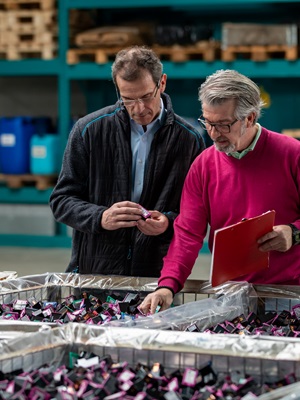Cars: the epitome of technological beauty, the symbol of travel freedom, and the bearer of social status. The same metallic body carries different meanings in different countries.
What does the car mean to a Singaporean? What drives one to buy a car and use it? I find that driving in Singapore is rarely borne out of necessity. Social status, convenience, safety, accessibility are more likely reasons for owning and driving a car. Here, driving choices are motivated by personal needs — convenience, safety, accessibility. Sadly, long-term societal harms of cars rarely factor into influencing one’s decision to drive.
Thus, these objects have become prominent symbols of society’s normalisation of short-termist self-gains. Unwilling to let go of driving habits, our society overglamorises electric vehicles and clings onto the illusion that they are ‘clean’ technologies. But consumption of ‘clean’ technology is still consumption, and I worry that we are dangerously sliding down a new route back to disaster.
What is more important to emphasise is new societal narratives surrounding cars. To restore our transportation to climate-healthy standards, we must question its ubiquitous existence, and ultimately dismantle larger resource-intensive mindsets and systems. Singapore’s car addiction must go.
Overall car-buying trend in Singapore
Aren’t current policies in Singapore already curbing the car growth? Indeed, against the odds of Singapore’s expensive car ownership rules, freeze on car growth rate and an expanding public transportation infrastructure, our car population continues to rise. Some attribute this to the declining number of deregistered vehicles. Figure 1 below shows the number of vehicles by type from 2005 to 2020. Cars, which form the large majority, have displayed generally an upwards trend.
Surprisingly, even amidst the pandemic-induced economic woes and reduced travelling, data from LTA shows that the car population had risen by 2.61 percent from beginning-2020 to March 2022. Vehicle numbers climbed from 565,033 in 2020, to 579,369 in 2021, to 579,792 in March 2022. Of these, super-luxury car purchases are also increasing. According to insurance company Budget Direct Insurance, since 2008 the number of Bentley cars has risen four times, while Lamborghini, Ferrari, Aston Martin and McLaren have seen numbers multiply two to three times. Table 1 below by Channel NewsAsia (CNA) documents the total annual registration of luxury cars, showing how luxury car-buying last year was the highest in five years, at 1,143. No wonder reports show that larger and more expensive cars are populating our roads more than smaller ones.
Table 1. Total annual new registration of cars by make, where listed makes are luxury car brands.
Source: Land Transport Authority. Infographic source: CNA [link]
On why luxury car sales rose even during the pandemic, Mr Raymond Tang, a spokesman of the Singapore Vehicle Traders’ Association, said it could be because travel restrictions helped the rich’s wealth accumulate, so they channelled spending into cars instead. Or perhaps it was simply that the number of ultra-high-net-worth individuals in Singapore swelled by 10% in 2020. Still, pandemic or pre-pandemic, the trends are headed in the same direction, pointing to how the main motivating factor driving car-buying in Singapore diverges from simply cost and necessity. Other factors more likely at play are the desires to flaunt one’s social status (since cars are also prestige goods and status symbols), or simply for personal convenience and comfort.
Overall electric vehicles trend in Singapore
In a 2020 Budget speech, former finance minister Mr Heng Swee Keat announced Singapore’s plans to phase out internal combustion engines by 2040, and from 2025, there will be no new diesel car registration. These are in line with the Singapore Green Plan 2030’s goals to reduce peak land transport emissions by 80% by or around 2050, and and to achieve 75% mass public transport ridership by 2030.
Electric vehicles (EVs) naturally and automatically present themselves as the green alternative to the fuel-powered car. With no tailpipe emissions, increased energy efficiency and the potential to run on clean energy grids, EVs have the potential to reduce pollutants associated with petroleum vehicles. Recently, the Singapore government has introduced a slew of changes supporting the electric vehicle: From 2030, all newly registered vehicles are required to be clean energy models, and by that same year, the electric vehicle network will expand to 60,000 charging points, up from 1,600. Under the Enhanced Vehicular Emissions Scheme, electric car-buyers enjoy 45% rebates off the additional registration fees (ARF) tax.
Meanwhile, feeling edgy about their displacement in a world increasingly distasteful of fossil fuels, car companies are starting to pour money into the development of EVs as well. Nissan plans to invest US$17.6 billion into its electrification push, Ford is channelling US$50 billion and Volkswagen is topping the list at US$100 billion.
Heightened urgency in the international atmosphere definitely also played a role in pushing electric vehicles into the national conversation. At COP26, at least six major automakers and 30 national governments pledged to phase out sales of new gasoline and diesel-powered vehicles by 2040. Hence, these policies have delivered a greater variety of EV models for consumers, with increasingly affordable prices.
Thus, it is unsurprising that in the past two years alone, the number of electric vehicles has risen 20-fold and the number of new purchases jumped 17 times.
What’s the big deal? Isn’t this a good thing? Evidence of a rapid transition from the fossil economy; aren’t these figures exactly what we need?
Car businesses love lavish compliments about the benefits of their technology, and indeed being cognisant of them is important. But before we become blinded by falling too deeply in love with EVs, let us first consider its steep socio-environmental costs — it will help us take the proclaimed technological marvels with a pinch of salt. Given the current EV-embracing environment we are heading, I will now focus less on comparisons with conventional vehicles, but instead on the implications of an EV-rich future.
Social and environmental disasters embedded within the electric vehicle
Metal mining
More EVs means more electric batteries (the main constituent of these vehicles), and more electric batteries means more lithium, nickel, manganese and cobalt. One car lithium-ion battery pack (of a type known as NMC532) could hold around 8 kg of lithium, 35 kg of nickel, 20 kg of manganese and 14 kg of cobalt, figures from Argonne National Laboratory show. As the world’s hunger for lithium balloons to more than 11 million units, battery demand for lithium chemicals is forecasted to rise to 700,000 metric tonnes lithium carbonate equivalent (LCE) by 2025. Aggressive mining for these metals has created profound social and ecological disasters worldwide. In Tibet, toxic chemical leaks from the Ganzizhou Rongda Lithium mine caused fish and livestock to die en masse; a recurring incident of 2009, 2013 and 2016. In Chile, lithium mining destroys the Atacama salt flats, through siphoning water and drilling processes, as well as exacerbates water scarcity in the country. In the Democratic Republic of Congo (DRC), which supplies around 70% of the world’s cobalt, child labour is rampant. In Russia, metallurgical waste from nickel mining polluted the river so much it turned blood red. In all these environmental damage, we must remember that there are vulnerable communities, such as the Indigenous peoples, affected by each pollutant chanelled into the atmosphere and each gram of metal dug from the ground. A clear textbook scenario of environmental injustice, I find it difficult to think that profit-making resource extraction operations can ever be sustainable.
While metal recycling has been proffered as a solution, and the urgency of it glaringly obvious, the reality is that lithium recycling will not pick up pace anytime soon. As ominously suggested by current paltry rates of lithium recycling (5%), lithium battery costs have plummeted by 98% over the past three decades, meaning that it is increasingly cheaper to extract virgin resources rather than recycle.
Prolonging our love affair with cars also means continued construction and maintenance of resource-intensive infrastructure. Petroleum-derived asphalt roads, carparks and new charging stations are just a few that will persist. Truly, are electric vehicles bellwethers of a fossil-free future? Or do they entrench us in the fossil economy instead? Roads are also invisible sources of air pollution. In particular, they emit loads of semivolatile organic compounds, which further reacts with air particles to form harmful aerosols. Especially in Singapore’s hot weather, pollutant levels could skyrocket by 300%, as compared to low temperature conditions.
Furthermore, continued road-building in land-scarce Singapore forces us to make costly trade-offs in land use. Already, 12% of Singapore’s land is used for roads; making us in the top five most road-dense countries. Yet, neither does this figure seem set to slow down: in 2020, Singapore announced building another dual four-lane flyover and widening expressways. Another new expressway, the North-South Corridor, is in the works. In our already compacted urban landscape, road expansion also means more people living closer to pollutive, noisy roads, and suffering the adverse health impacts. I have heard people downplay the risk of air pollution in Singapore, but let us remember that it is the vulnerable minority that suffer the harshest impacts: asthmatics, children, elderly with lung and heart issues, and those who work outdoors like migrant construction workers. The injustice of this social inequality cannot be more obvious.
Will the air pollution be mitigated with the switch to EVs? To some extent, yes. EVs eliminate nitrogen oxides, hydrocarbon and carbon monoxide present in tailpipe emissions. However, they also rank worst on ozone production, thus probably contributing to more ground-level ozone. Given that ground-level ozone is a significant driver of air pollution, a rising EVs trend does not bode well for our air quality. We must also not forget that while the exhaust fumes have disappeared, the very construction of each vehicle means significant emissions have been outsourced to other countries too. The invisibility of this upstream pollution in Singapore makes it all the more dangerous, as people no longer think about the profound well-to-wheel cost infused in every car.
While some argue that these roads alleviate congestion and the concomitant pollution from idling, decades of research point to the ironic phenomenon of ‘induced traffic demand’, where more cars fill up the available space whenever roads expand. For example, a 2019 study found that Norway’s highway expansions relieves congestion only in the short-term, while encouraging sprawled development and traffic growth in the long-term. This could be the fate for Singapore, too. Additional emissions from increased traffic thus outweighed any benefits from less engines idling. Hence, when do the limits of our ecological space become considered, and when does constant road expansion end?
Since cars are meant to speed up travel, any unexpected hindrance to that goal often ends up ugly, displaying the worst side of human nature through road rage. Road rage cases range from violent assaults — a Bentley car driver threatening to run down a security officer, a driver who intentionally rammed into a Traffic Police Officer — to verbal abuses to intense honking. Of course, cases of human kindness in driving still do occur sporadically, but they make up only a handful. Ask any school security guard who meets drivers on a daily basis and they will attest to that, too. Elsewhere in the US, researchers found that a shocking 80% of drivers had engaged in significant aggression at least once in the past year, and that nearly eight million took it to the extreme, such as purposely ramming into another vehicle. With mindsets still fixated upon getting from point A to B as fast as possible, a revised fleet of fancy electric vehicles, therefore, will not change obnoxious behavioural trends.
Posted 15/09/2023

















